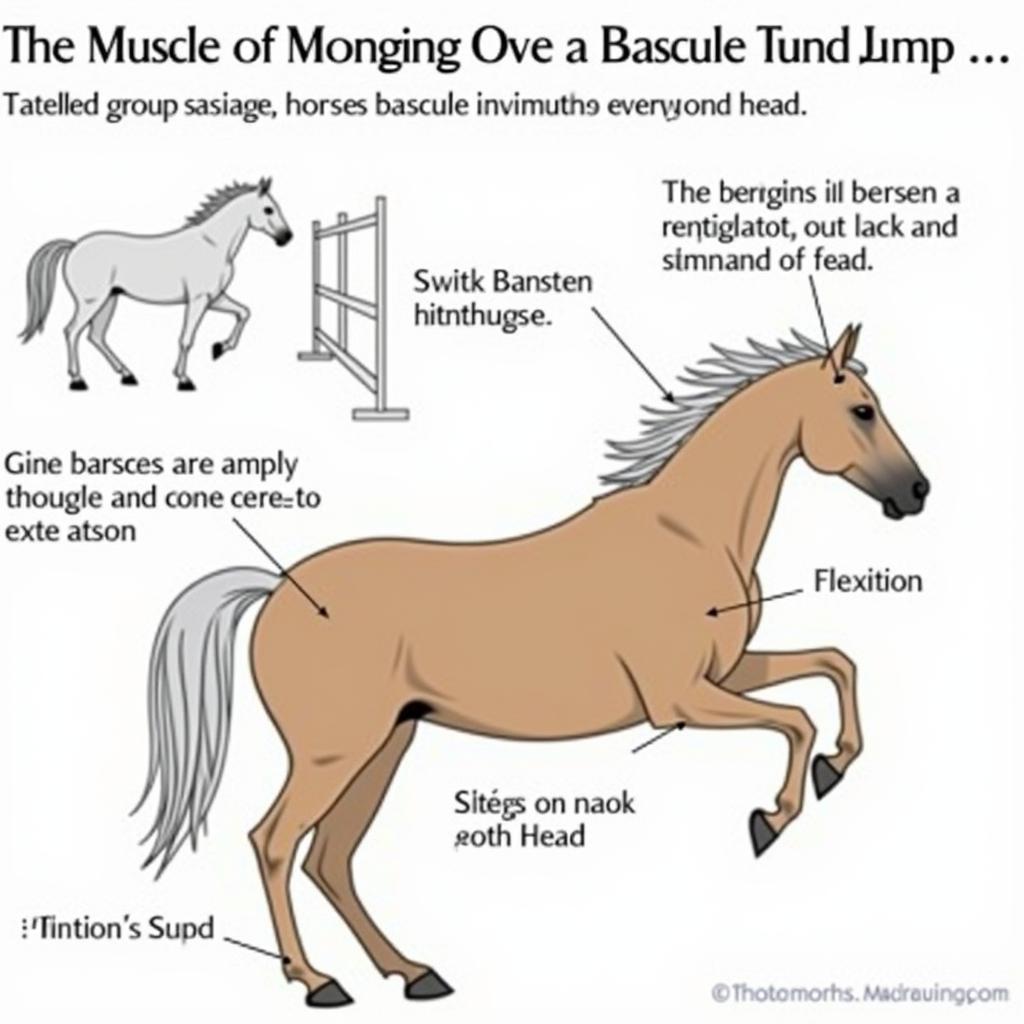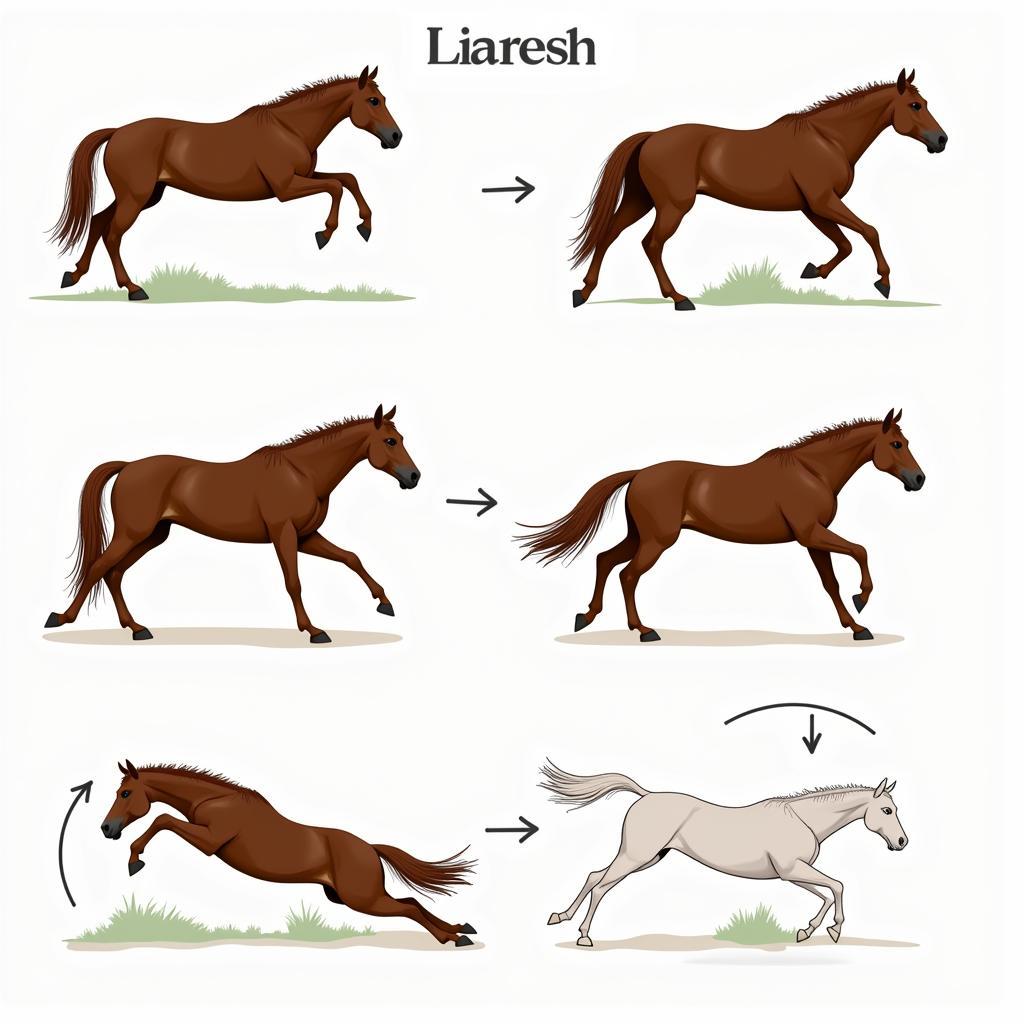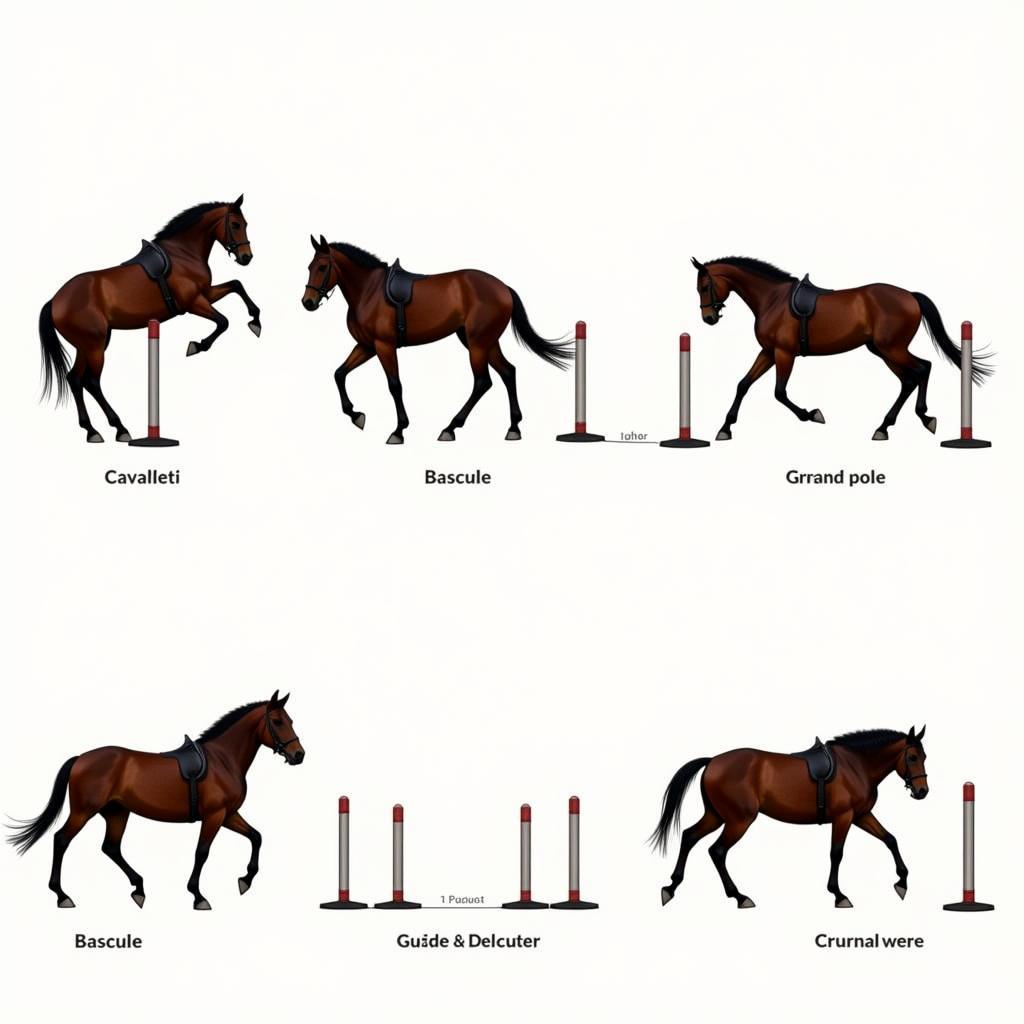The term “Bascule Horse” refers to the ideal posture and balance a horse achieves when jumping, particularly over fences. This rounded shape, resembling a rocking horse in motion, is crucial for clearing obstacles efficiently and gracefully. It’s a testament to the horse’s athleticism and training, allowing it to navigate complex courses with power and precision. Let’s delve into the intricacies of the bascule, exploring the anatomy, movement, and training techniques that contribute to this remarkable athletic feat.
The Anatomy of a Bascule
Achieving a perfect bascule involves a complex interplay of muscles, tendons, and ligaments throughout the horse’s body. The hindquarters are the engine of the jump, providing the initial thrust and propulsive power. Strong abdominal muscles are essential for lifting the forehand and maintaining balance. The back, acting as a bridge, must be supple and flexible to allow for the necessary rounding. Finally, the neck and head play a crucial role in maintaining balance and directing the horse’s trajectory. A horse with a well-developed topline and strong core is naturally predisposed to achieving a good bascule.
 Bascule Horse Anatomy: Muscles and Skeletal Structure Involved in Jumping
Bascule Horse Anatomy: Muscles and Skeletal Structure Involved in Jumping
The Mechanics of the Bascule Movement
The bascule movement is a dynamic process, beginning with the approach to the jump. As the horse nears the obstacle, it gathers its hind legs beneath its body, preparing to launch itself upwards. Upon takeoff, the hindquarters generate the necessary power, propelling the horse into the air. Simultaneously, the abdominal muscles engage, lifting the forehand and initiating the rounding of the back. At the apex of the jump, the horse’s body forms the characteristic bascule shape. As the horse descends, the forelegs extend forward, preparing for landing.
 Bascule Horse Jumping Sequence: From Approach to Landing
Bascule Horse Jumping Sequence: From Approach to Landing
Why is the Bascule Important?
The bascule is more than just an aesthetically pleasing posture; it’s crucial for efficient and safe jumping. A good bascule allows the horse to clear the fence with minimal effort and reduces the risk of knocking rails. It also helps the horse maintain balance and control throughout the jump, allowing for a smoother landing and transition back to a normal gait. For best jumping horses, the bascule is essential for navigating challenging courses.
Training for a Better Bascule
Developing a good bascule takes time, patience, and consistent training. Gymnastic exercises, such as cavalletti and ground poles, can help strengthen the necessary muscles and improve coordination. Jumping small fences encourages the horse to develop the proper technique. A skilled rider plays a vital role in guiding the horse and providing the necessary support. Remember, over-jumping or pushing a horse too hard can be detrimental and can lead to injuries. Consistent, patient training focused on building strength, flexibility, and coordination is key.
How can I tell if my horse has a good bascule?
A good bascule is characterized by a rounded back, tucked hind legs, and a relaxed neck and head. The horse should appear balanced and effortless throughout the jump. Photographs and videos can be valuable tools for assessing your horse’s bascule. Consulting with a qualified trainer can provide valuable insights and personalized guidance.
“A well-executed bascule is a testament to the harmony between horse and rider,” says renowned equestrian trainer, Amelia Cartwright. “It’s the result of dedicated training, focused on building strength, flexibility, and trust.”
 Bascule Horse Training Exercises: Cavalletti and Ground Poles
Bascule Horse Training Exercises: Cavalletti and Ground Poles
Conclusion: The Art of the Bascule Horse
The bascule is a testament to the athleticism and grace of the horse. It’s a complex movement that requires strength, flexibility, and coordination. By understanding the anatomy, mechanics, and training techniques involved, we can appreciate the beauty and precision of this remarkable athletic feat. Developing a good bascule takes time and patience, but the rewards are well worth the effort. Whether you’re a seasoned competitor or a casual rider, understanding the bascule is essential for appreciating the true potential of the horse.
FAQ
- What is a bascule in horse riding? The bascule refers to the rounded shape a horse’s body forms while jumping.
- Why is bascule important? It allows the horse to clear fences efficiently and safely.
- How can I improve my horse’s bascule? Through targeted exercises like cavalletti and ground poles.
- What muscles are involved in bascule? Primarily the hindquarters, abdominals, and back muscles.
- Is bascule important for all disciplines? While most crucial for jumping, it contributes to overall athleticism.
- How can I tell if my horse has a good bascule? Look for a rounded back, tucked hind legs, and a relaxed neck.
- Can a poor bascule be corrected? Yes, with proper training and conditioning.
“Building a strong bascule is not just about physical training; it’s about building a partnership with your horse,” shares experienced veterinarian, Dr. James Harrison. “Understanding their individual needs and limitations is key to achieving optimal performance.”
Need support? Contact us: Phone: 0772127271, Email: [email protected] or visit us at QGM2+WX2, Vị Trung, Vị Thuỷ, Hậu Giang, Vietnam. We have a 24/7 customer service team.